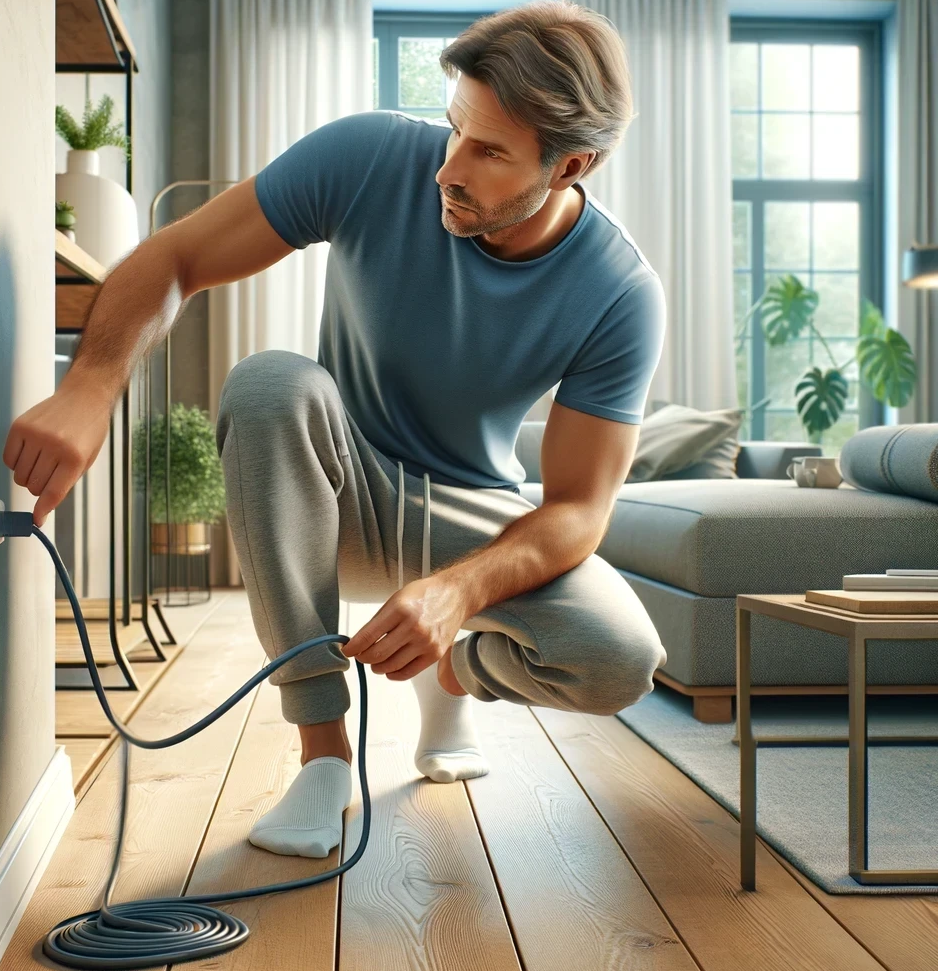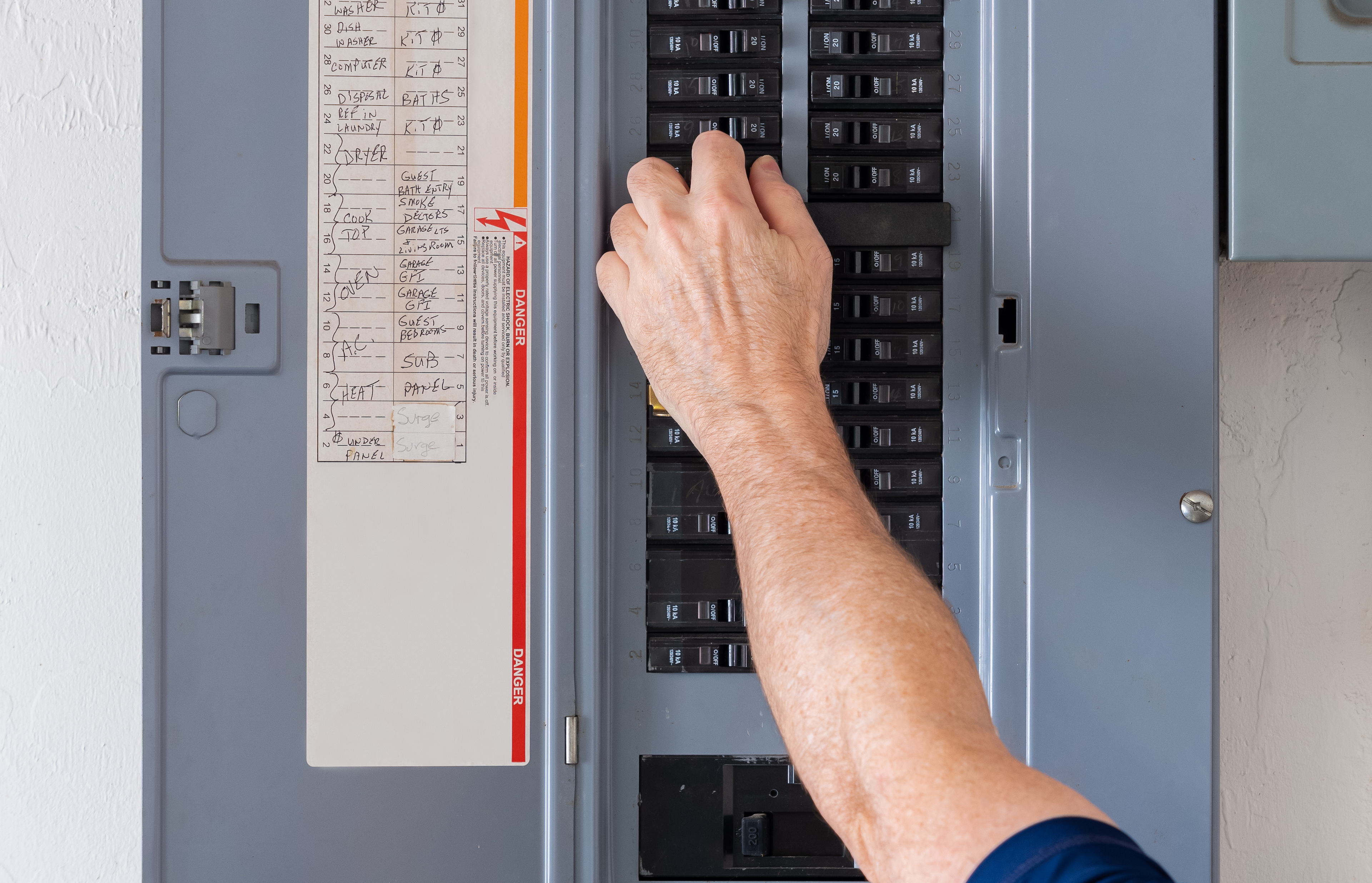Schedule your laundry appliance repair now!
The Silent Killers in 2024: Appliance Overloads and Electrical Hazards
Welcome to Sears Home Services! Our primary goal is to ensure your safety. The silent killers in your home, appliance overloads and electrical hazards, often go unnoticed until it's too late. In this guide, we will help you understand these threats, how to prevent them, and the critical role they play in keeping your home safe. We'll also share some valuable tips to maintain electrical safety. Our aim is to equip you with the knowledge to ensure your home is safe and your appliances are running efficiently. Let’s dive in!
KEY TAKEAWAYS
- Understanding the causes, signs and dangers of electrical system overloads will help you keep your family and home safe.
- Connecting too many devices to one electrical outlet or using extension cords to provide power to multiple high-wattage appliances can easily cause overloads.
- When you notice problems with an appliance or an appliance trips a circuit breaker continuously, stop using the appliance and have a service technician repair the problem.
Understanding Appliance Overloads
An overload can pose a significant risk to your family’s safety. To protect your home, it's essential to understand the causes, signs, and dangers associated with appliance overloads.
Triggers of Appliance Overloads
Appliance overloads can be due to various reasons. Frequently, it's a result of connecting too many devices to a single outlet or circuit. For example, plugging in multiple high-energy appliances like televisions, computers, and kitchen appliances into one outlet can easily cause an overload. Additionally, outdated wiring or an electrical system not designed for modern appliances can also lead to overloads.
Another cause of appliance overloads is caused by a defective component or short circuit inside an appliance. For example, a bad motor in a washer can cause an overload and trip the house circuit breaker. An internal fuse or safety switch in the washer can also trip when a component goes bad or wiring shorts out inside the machine. If you reset a tripped circuit breaker and it trips right away after trying to use an appliance, you’ll likely need to have the appliance serviced by a technician to fix the internal failure and ensure the safety of the appliance.
Recognizing Appliance Overloads
Identifying the signs of an appliance overload is crucial. These signs can include lights flickering or dimming when an appliance is turned on, circuit breakers frequently tripping, or appliances overheating. If you notice any of these signs, it’s vital to address the problem immediately to prevent potential dangers.
Consequences of Overloading Appliances
Overloading can have severe repercussions. It can cause overheating, increasing the risk of electrical fires. It can also damage the appliances themselves, shortening their lifespan, and potentially voiding warranties. Plus, overloading can result in power outages and electrical shocks, posing a threat to both your safety and the functionality of your home's electrical system.
At Sears Home Services, we understand the importance of preventing appliance overloads and electrical hazards. Our team of expert technicians can help you identify potential overloading issues and ensure the safety of your appliances and home. Schedule repair service as soon as you see signs that an appliance has a short or failed component that is overloading your home’s electrical circuits.
Preventing Appliance Overloads
Preventing appliance overloads and potential electrical hazards requires proper electrical maintenance. By adhering to a few simple guidelines, you can ensure your home's safety and extend the lifespan of your appliances.
Understanding the load capacity of your electrical system is crucial. Each circuit in your home has a specific load capacity, which is the maximum amount of electrical current it can safely handle. Overloading a circuit can lead to overheating, tripped breakers, or even electrical fires.
When using multiple appliances simultaneously, it's important to be mindful of the electrical load you're placing on a circuit. Here are a few tips to help you avoid overloading your electrical system:
- Spread out high-wattage appliances: High-wattage appliances like window air conditioners, electric heaters, computers and televisions draw a significant amount of power. Avoid using them on the same circuit to prevent overload.
- Use extension cords properly: Extension cords should be used as a temporary solution. Avoid plugging multiple appliances into the same extension cord, as this can exceed its load capacity.
- Unplug unused appliances: Unplugging appliances when not in use reduces the load on your electrical system. This is especially important for devices with standby modes, as they continue to draw power even when not actively used.
By adopting these practices and understanding your electrical load capacity, you can prevent appliance overloads and reduce the risk of electrical hazards in your home. If you have any concerns or need assistance, our expert technicians at Sears Home Services are always ready to help.

Identifying Electrical Hazards
Preventing electrical hazards in your home begins with awareness. By understanding common electrical hazards, recognizing signs of faulty wiring, and understanding the risks of outdated electrical panels, you can take proactive steps towards ensuring the safety of your home.
Overloading electrical circuits is one of the most common electrical hazards in homes. As described above, overloading occurs when too many appliances or devices are connected to a single circuit, putting excessive strain on the wiring and potentially leading to overheating or even electrical fires. To avoid overloading, it's important to distribute the electrical load evenly throughout your home and use power strips and surge protectors when necessary.
Use extension cords wisely. Extension cords offer convenience but should be used with caution. Avoid overloading them with too many devices, as this can exceed their capacity and lead to overheating or electrical fires. Check the wattage rating of your extension cords to ensure they can handle the devices you plan to connect. Regularly inspect them for any signs of wear or damage and replace them if necessary.
Faulty wiring is another significant electrical hazard. Signs of faulty wiring include flickering lights, outlets that spark or feel warm to the touch, circuit breakers that frequently trip, or a burning smell coming from outlets or switches. If you notice any of these signs, it's crucial to address the issue promptly by contacting a qualified electrician. Ignoring faulty wiring can lead to electrical shocks, fires, or damage to your appliances.
Outdated electrical panels also pose their own risks. Older panels may not be equipped to handle the demands of modern electrical usage, potentially resulting in overloaded circuits and increased fire hazards. If your home has an outdated electrical panel, it's advisable to have it inspected and, if necessary, upgraded by a licensed electrician. Upgrading to a newer panel with adequate capacity and safety features can offer peace of mind and protect your home from potential electrical hazards.
Maintaining Electrical Safety
Ensuring electrical safety is of paramount importance to protect your home and loved ones. Taking necessary precautions and being proactive can go a long way in safeguarding against potential dangers. Here are some essential steps you can take.
Hire a Professional Electrician
Electrical work is intricate and should be handled by a licensed electrician. Hiring a professional ensures that the electrical system in your home is installed or repaired correctly, minimizing the risk of overloads and hazards. Professionals have the knowledge and expertise to handle electrical tasks safely, reducing the chances of accidents or damage.
In Case of Electrical Emergencies
Electrical emergencies can happen unexpectedly and pose serious risks. Knowing how to respond in such situations is crucial. If you experience an electrical emergency, immediately shut off the power supply by flipping the main circuit breaker. Contact a professional electrician for assistance and avoid attempting to fix the problem yourself, as it may lead to further complications or injuries.
Schedule your laundry appliance repair now!
Trust our experienced technicians to handle your washer and dryer repairs, regardless of the problem.
Was this information helpful?
Repair Laundry Appliances Resources
Discover how extreme cold affects your appliances with Sears Home Services.
Embracing innovation in washers and dryers can transform your laundry routine into a high-tech experience.
Discover the latest innovations in laundry technology with cutting-edge washer and dryer features.
Discover the top 5 surprises for new homeowners with Sears Home Services.
